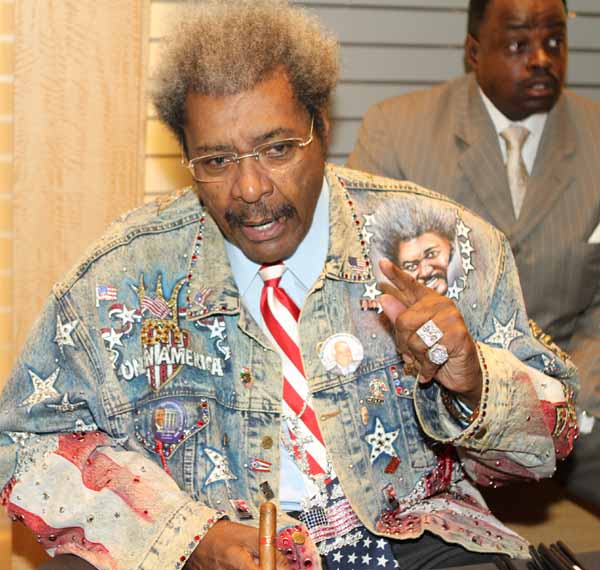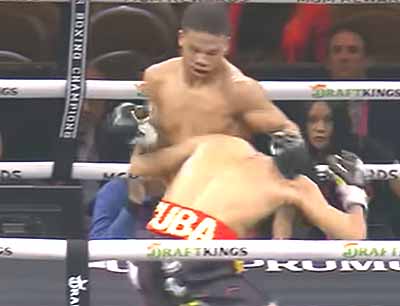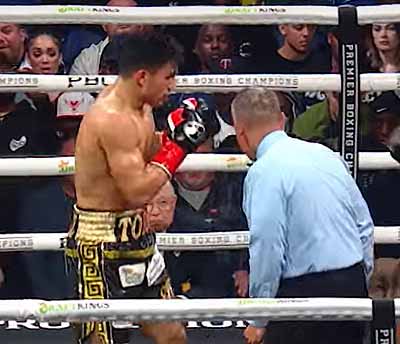Its amazing how easy memories come back. I’m watching what I thought would be a very compelling heavyweight fight between Roy Jones Jr. and John Ruiz. The quicker Jones is having no trouble with the plodding Ruiz.
As I attempt to tune out the announcer’s inane comments designed to keep the audience interested in this one sided affair, I am suddenly transformed, in my mind, to a long line leading to a movie theater on the upper Westside of Manhattan on a cold February night.I’m with a friend and we’re standing right behind Lauren Bacall and Jason Robards, married at the time, 1964, waiting to see what everyone, including these celebrities in front of us, thinks will be a very compelling heavyweight fight.
Similar to the Jones and Ruiz bout, this long ago title fight, featured a big heavyweight champion and a challenger with fast feet and an even quicker mouth. Also, as with Jones/Ruiz, the adage “a good big man will always beat a good little man” was inserted into almost every discussion and story written about the fight.
The good big man in this case was, of course, Charles “Sonny” Liston, the reigning heavyweight champion, who had decimated every fighter put in front of him on his rise to the heavyweight title, including the previous champion, Floyd Patterson. In fact, Liston’s dismantling of Patterson, not once but twice, both inside a round, was so complete, so humiliating that, after the second bout, Patterson had literally snuck out of Las Vegas in a disguise consisting of a false nose and wig. Never before, or since, had a heavyweight champion so perfectly fit the role of Goliath as Sonny Liston did.
He was the Hollywood studio typecast of a bully, even in this, the most brutal of all sports. And Liston appropriated the role as if he had been born to play it. No one before or since, including the young Mike Tyson, utilized the dark art of intimidation, in and out of the ring, better than Sonny Liston. He had perfected the technique as a “leg breaker” for the mob in St Louis, where decades after his reign of terror on the streets, his reputation was still mentioned with a sense of awe and the simple declaration “you paid Sonny or you woke up in the middle of next week”.
I remember the guy who gave me that quote as he kept looking over his shoulder, speaking in a hushed tone, as if he expected Liston to come barreling around the corner at any minute with malice in his eyes and bad intentions in his walk. Sonny Liston, at the time, had been dead for twenty years.
It wasn’t that Sonny Liston was physically big, he was “only” 6’1″ and usually fought at a top weight of 225. It was the way he carried himself, his history with the mob, the two stints “inside” on various racketeering convictions and most of all the manner in which he had, up to this point, thoroughly dominated most of his opponents.
Liston didn’t just beat his opponents, he “beat them down” long before that term gained its current convention and it defined the public perception that Sonny Liston was not only fearsome but also an unbeatable fighter.
Thus it was generally assumed, at the time, by the “smart money” in boxing, that a young, brash Olympic champion out of Louisville, one Cassius Clay, would provide little more than a “speed bump” in Liston’s trail of destruction through the heavyweight ranks. Clay, who had yet to abandon what he later termed his “slave name”, had compiled an unbeaten record in eighteen fights, although some believed he had gotten a “gift” in a ten round win over Doug Jones the previous year in New York.
Since Liston had disposed of all contenders and literally run out of heavyweights to fight, Clay was offered a title shot even though many of the self same “experts” were convinced that it was a case of “too much too soon” for the unbeaten Clay. He was generally being looked upon as the next sacrificial offering to the hulking behemoth of a champion. The bout was set for the storied Miami Beach Auditorium and the only questions that rejoindered as fight time approached was who would Liston fight next and would the expected loss be a devastating blow to Clay’s career.
At the weigh-in, this particular scenario seemed to follow the script as Clay appeared to be on the point of nervous collapse. His blood pressure rose to such a level that doctors in attendance actually thought he might be on the verge of a heart attack and seriously considered postponing the bout. Newspaper pundits ascribed the condition to “Cassius Clay being scared to death”. Given Liston’s record, reputation and demeanor, this particular assessment was not quickly discounted.
The fight was carried on the 1960s equivalent of PPV, that is, it was broadcast “live” on a big screen in a movie theater. Cable television was in its infancy in 1964 and used primarily in rural areas where television reception, because of the topography and distance, was difficult to receive “over the air”. I went to the fight at a Loews theater with a friend from Brooklyn, Vinnie Vitale.
Vinnie and I mutually groused about the six dollar admission, an unheard of amount to walk into any movie house in those times. We were especially leery since we had been “burned” by the second Liston/Patterson bout which lasted less than 120 seconds and for which we had also paid six dollars in Brooklyn. We had figured out that the fight had cost us over five cents a second, at a time when you could still buy a daily newspaper for a nickel.
We were hoping against hope, but realized a repeat performance was a distinct possibility. As we waited in line and to pass time against the February cold, Vinnie asked Jason Robards “who do you like”. It was Bacall who answered, in that famous breathy voice, “Liston in four” and quickly turned her back (Bacall was, by far, the bigger fight fan in that couple as had been dutifully noted in Walter Winchell’s column, her interest in the sport dating, no doubt, back to her days with Humphrey Bogart). At least, I thought, for the six bucks I got to hear Lauren Bacall deliver a line.
I clearly remember thinking that the picture on the movie screen, for six bucks, was not as focused as I thought it should have been. Neither in top form, sadly, was Joe Louis, who was doing “color” on the broadcast and who seemed to be “in there for a check” much as he had been in his final fights at the end of his career.
There were no “prelims”, only the “main attraction” as the ring announcers liked to put it, a “no frills” entertainment excursion long before that phrase had dire meaning to air travelers. The fighters finally made their way to the ring and to their respective corners.
The introductions of the “celebrities at ringside”, from both the entertainment and boxing worlds were next, including the “Brown Bomber” who took a moment from his broadcasting duties to lumber into the ring along with Frank Sinatra who was known to be a fairly knowledgeable fight guy. Finally, Clay and Liston were introduced, and the referee motioned them to the center of the ring for their instructions.
As the fighters came together, Vinnie poked me in the ribs and stage whispered, in the practiced tone of generations of Brooklyn moviegoers, what many in the audience had already noticed and were undoubtedly also thinking, “Holy …., look at that, Clay is as big as Liston”. And Vinnie was right, the massive Liston, the Goliath, the leg breaker from St Louis, the man who had sent Floyd Patterson sneaking out of town, was eye to eye with Cassius Clay, the “Louisville Lip” who, the day before, was supposedly “scared to death”. It was to be, of course, only the first of several surprises that evening, Liston was in against someone his size. I wondered if Lauren Bacall was still certain about “Liston in four”.
The fighters, finished with the instructions, turned, went back to their corners, and though no one knew it at that moment, one was about to step into storied and controversial legend, the other about to begin a slow, sad, public downfall that commenced six rounds later when Sonny Liston sat on his stool and relinquished the most coveted title in boxing.
Liston’s story ended six years later in a bedroom in Las Vegas, the once feared fighter laying at the foot of his bed, dead, under circumstances that are, to this day, still in dispute. Clay, immediately after the fight, became Ali, and his transgressions in and out of the ring, real and perceived, were overcome by the enormity of his skill as a heavyweight champion. Sonny Liston went into that ring that night in Miami Beach bigger than life, yet it was Cassius Clay who came out of the ring the larger man and in the years to come, Muhammad Ali kept getting larger, seemingly by the day, until he was the biggest thing in the sport of boxing. Its amazing how easy memories come back. Bernie McCoy



